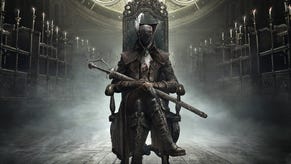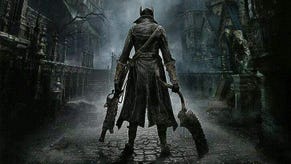Bloodborne is a Souls successor with serious bite
The first playable demo reveals plenty of blood-ties - but you'll have to learn its new rules fast.
Taking control of Bloodborne for the first time is a familiar experience, a comfort that quickly became my undoing. The sheer snappiness to the character movement, the targeting system, the way attacks buffer; everything comes together in precisely the same, satisfying concoction as Demon's Souls, Sony's exclusive from 2009. And then there's the strong flair for the gothic, with gloomy streets and the grotesque, gargoyle-etched décor paving a dark road ahead.
Horror oozes from Bloodborne's visual make-up, and I'm glad it's taken this direction. In line with the celebrated risk-reward design of its lineage, the tone of intimidation also forms a crucial part of its winning formula - an area which I felt was understated in Dark Souls 2. Reaching a high gothic spire early on, a full view of the town proves almost monochrome in its black pitches and moon-lit highlights, with everything within sight said to be traversable. And for anything out of sight - all those shadowy corners - there's every chance some wretch will come out flailing.
The city strikes a similar, bleak chord to From Software's earlier games, but it still somehow feels fresh. Cobble-stone streets are beautifully detailed, framed by gnarled housing supports and smog rising from grates; it's all gorgeously lit, and a true vision of how a Souls game should look on new hardware. All that's missing are the souls themselves - and exactly how currency and experience is managed in Bloodborne is still not 100 per cent clear.
Starting off, I'm not given much of a choice in direction, with most gates locked (presumably for more elaborate pathway branches in the full deal). A gathering of pitchfork-wielding townsfolk are up ahead, but, with promises that this segment is made easier for demonstration purposes, I make the mistake of thinking I'm ready to apply old tactics. Luring one out with a pebble, the blood splash is pronounced on first strike, with each splatter bursting from our saw-cleaver like a scene from Kill Bill, and our hero looking all the more crimson-tinted for it. Once the fuss attracts too much attention from the remainder of the pack, it's a fairly quick death.
I've seen where this leads in an earlier presentation. The Henward's Gravetown filled with grieving wretches comes next, followed by a giant rift bridged by man-made supports. The slight sluggishness to controls, particularly sprint acceleration, that crept into later entries in the series is now thankfully gone. And precariously crossing the roof beams to reach the other side, it's a great to see the cheeky kick move is back from the first Dark Souls.
Battle has a lot in common with previous games, but there are lessons to learn above the fundamentals. Backstrikes make a return for an instant death on regular grunts, and a bespoke parry, named Counter Shot, takes advantage of your left-hand Blunderbuss; a buck-shot that involves tapping L2 just before the enemy strikes. Mixing up the weak and strong attacks works as usual, while a bottom item slot grants a choice of either pebbles or Molotov cocktails here. One for discrete luring, and the other for a more direct affront.
But there are also changes to the control layout, which may, at first blush, flummox players set on the Souls standard. For starters, From Software tosses the shield off the castle bridge, and instead allots the L1 button a new role; transforming the right-hand weapon between short and long-ranged forms. Want to break the opponent's guard with broad, arcing sweeps? Use the latter. Need faster, lower-risk strikes? You're covered. Plus there's the option to attack mid-transformation to build up a more varied sequence of strikes, and even hold R2 for a charged lunge. That's all new, and the move potential becomes a bit mind-boggling.
Even with the demo's nerfed difficulty, this offense-focused design made the learning curve of Bloodborne a touch steep for me. After all, Dark Souls lets most character builds settle into a simple sword and shield combo to start, just to play defensive until you find your feet and advance - in my case - to riskier two-handed weaponry. But here we cut to that fiery end-point; from the off, you're expected to roll and sprint around enemy attacks with little backup, while wielding the firepower to make quicker dispatches.
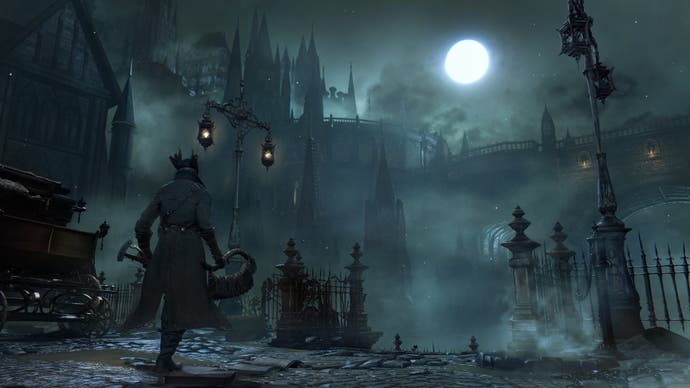
Rolls are faster, sharper to compensate, and there's also a reserve of healing items to the left of the health and stamina bars. The evasive options are leeches on that stamina gauge, as always, which means pacing of movement is still key. But crucially for those low on health, another handy lifeline is offered to the player: the Regain System.
Through this you get one chance at redemption; lost health can be reclaimed by attacking an enemy, with a depleting yellow bar indicating the maximum that can be salvaged. Once this has ebbed away from the HUD, it's gone, and likewise, this meter fizzles out after any nick on the nose from the enemy. It's critical to also learn that the same logic applies for your (mostly undead, ghoulish-looking) opponents.
This changed my attitude to combat massively. When you're in over your head, with only a thin strip of concrete red health left, the sight of a receding yellow line urges you to scout out more danger immediately. A later boss battle with the Cleric Beast also encourages nailing a light hit as soon as possible, just to zap out his lasting yellow reserve before it can be regained. The over-riding feeling of Bloodborne, then, is that it's Dark Souls on the most manic tilt, where the difference between life and death, for you and your foe alike, hangs on a terrifying pinpoint.
To make matters more gruelling, the Gamescom demo also stripped away bonfire checkpoints. The penalty of death was instead a hard restart from scratch, making quick mastery of these new techniques crucial to survive. For me, it was too much too soon, and I can't wait to get my hands on the final release and restore that bruised ego.

I died, of course. Several times, in fact, and just as well. From the opening menu this opened the chance to try the other weapons available, with a total of three available in the demo. The inventory includes the stock saw-cleaver, with its lengthened form allowing knock-back effects on shielded enemies. A short one-handed axe is also up for grabs, transforming into a double-handed, elongated version with the added perk of regaining more health per landed hit.
And lastly, we have the as-yet untested mechanical claw, designed to appeal to more skilled players. Based on From Software's demonstration, the close-quarters discipline of the weapon suggests it'll be a riskier option to use overall, and likely unlocked later in the game. Details on class and gender preference are also still as foggy as the central town, as is the extent of customisation possible through items. But from my time playing through these early sections, the sheer personality of each weapon comes across loudly enough to make up for it.
All of which leaves me clamouring for specifics of Bloodborne's early 2015 release. It's a deeper slice of what enamoured me to the series in the first place; a beautifully twisted world design and, already, a superb sense of my character's proportion to it. And I doubt I'll be complaining on the grounds of difficulty when the time comes.
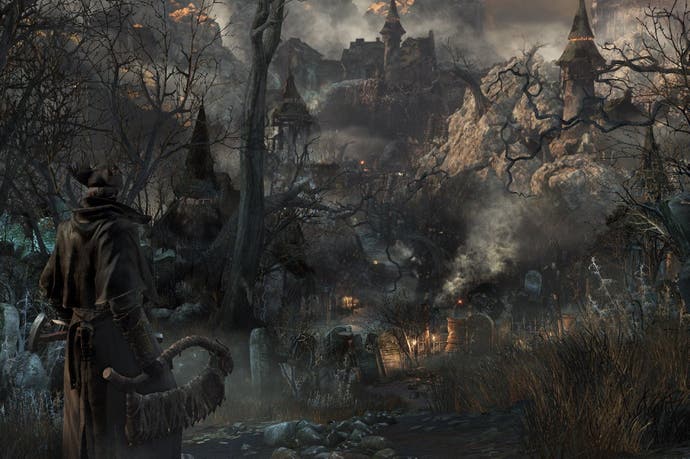



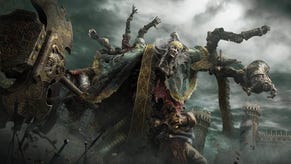

.png?width=291&height=164&fit=crop&quality=80&format=jpg&auto=webp)
